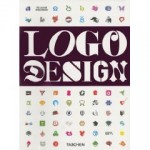 We’ve seen our fair share of poorly designed logos. We’ll even admit that in our early days of designing we created a few horrible logos. The following is a list of common mistakes in logo design. Do you fall in to any of these categories?
We’ve seen our fair share of poorly designed logos. We’ll even admit that in our early days of designing we created a few horrible logos. The following is a list of common mistakes in logo design. Do you fall in to any of these categories?
1. Unoriginal Design. Your logo should be original to the task at hand. The logo and branding strategy go hand in hand so be sure to create something unique and memorable for your client.
2. Vague. Every logo should convey a message to the viewer. If potential consumers know nothing about your client after looking at the logo, you have failed.
3. Rasterized. Your logo needs to be scalable so you should design it using Adobe Illustrator,CorelDRAW or some other vector software.
4. Cliché. Steer clear from anything expected. Remember, your logo should be memorable for the customer. By adding cliché, stock-art style images, your logo will disappear in the design clutter.
5. Too complicated. Many new designers try to complicate their logos by adding lots of detail, too many words, taglines, etc. Keep it simple. You’ll be more memorable.
6. Too fancy. For the most part, you should avoid excessive bevels, shadows, textures, filters. This will allow your logo to be used across many mediums.
7-11. Typography Issues. There are a number of common mistakes that are frequently made when designing a logo. Consider some below:
- Spacing. Fonts are built a certain way for a reason. Excessive spacing between letters (or lack thereof) should be used sparingly.
- Predictable Fonts. everyone knows that Times New Roman, Myriad Pro (although a fairly pretty font), and others are default fonts. Try to use something that isn’t default.
- Crazy Fonts. Don’t use fonts like Curlz or Papyrus to create your logo. Try using simple, professional, legible fonts. (Unless of course the target audience calls for something different)
- Ultra-thin fonts. Many extremely lightweight fonts may look nice on the computer screen but they may be difficult to use when trying to print on paper, screen on fabric, or embroider. Lightwieght fonts are also hard to read from far distances.
- Too many fonts. Try to stick to one font-style (maximum of two) in your logo design. This rule is especially true when you are doing JUST the logo design and not any of the other design work.
12. Asking for too much input. Excessive input from your client, his brother, the secretary, your mom, your uncle, the guy in the coffee shop and anyone else who will give you the time of day is well, excessive. Keep the design pure and clean by only involving those who absolutely need to be involved in the design process. (To avoid burn-out, you may also want to limit the number of revisions your client is allowed to make)
13. Clipart. This is simply taking the easy way out. Create original artwork for your client and they will thank you.
14. Unable to be used in grayscale. One important thing to remember about logos is that they frequently will be used in strictly grayscale circumstances. (Faxes, copies, one-color prints) Make your logo as powerful in both color and black & white.
15. Non-scalable. This is one of the most common tips around for creating logos. Make sure your client can scale their logo. Most logos (I say most because I know there are always exceptions) should be usable in anything from a giant billboard to a 16px square favicon.
16. Not made for all mediums. After working in a screen printing and embroidery shop, I realized how often people design logos without taking into consideration their future use. Be sure to deign your logos with the intent that they can be used on the internet, in print, on a street sign, embroidered on a backpack, and screen printed on a t-shirt.
17. Inappropriate Inclusions. There is usually no need to include LLC, Co. or Inc. (Most customers don’t actually care). You should ALWAYS avoid inappropriate innuendos or insinuations. They’re actually not funny- just distasteful.
18. Using time-sensitive imagery. If you use a cassette tape, bottle cap, or bell-bottom pants in your logo, you may be slapping an expiration date on it. Try to find something timeless that will last as long as the company hopes to.
19. Selfish design. Don’t design a logo with the goal in mind that it will make your portfolio look great. The first, and most important, goal of any logo design should be to help your client reach their target audience more effectively.
20. Too abstract. While an abstract logo can be very professional-looking for a company, what does it really say to the customer? “We weren’t really sure how to visually represent what we do or how you will benefit from our services, so here’s a square with a circle thingy”.
21. Copy Cat Logo. There was a recent article on the attempt of Pepsi to take market share from Coke. They practically copied their logo. It, of course, did not work and they were forced to change their logo.
22. Bad combination of colors. Remember, green tends to reflect eco-friendly companies, red and green means Christmas and pink is almost always for girls. Try to match the colors to your target audience.